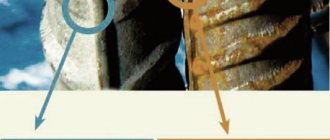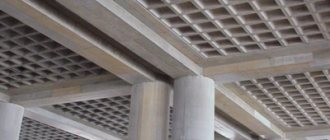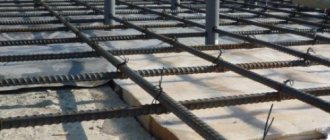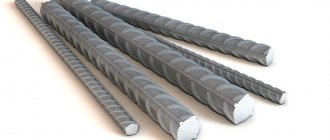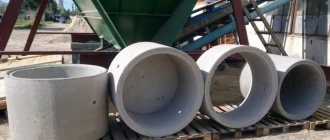The most important criterion for a high-quality, thorough implementation of a monolithic construction project is not violating building codes and regulations.
Among the significant points - the pace of formwork installation, selection and pricing of component elements, tools - the reinforcement clamp stool represents a serious and essential part of the correct monolith technology. It is very popular among modern types of reinforcement clamps. The simple design and low cost of the product do not reduce its value and effectiveness. How do fixing structures function?
Tasks of clamps
The task of the products is to maintain the correct position of the reinforcement cage in relation to the base. They are for one-time use. After pouring the concrete, they remain inside the base. The material should be inexpensive. Thanks to proper installation, the process of pouring the solution is accelerated several times.
Features, Benefits
During reinforcement, additional parts are used - stands for attaching metal rods. They are made of plastic and are called retainers. They have good technical performance and are in demand:
- Eco-friendly.
- Withstands exposure to ultraviolet rays and low temperatures.
- Inert to alkaline, aggressive environments.
- Versatile.
Purpose - to provide gaps between the surface of concrete and the reinforcing frame. Advantages:
- Possibility of filling with mortar, part of the structure will not budge.
- It is possible to maintain the distance from the surface to the reinforcing frame; the metal is not subject to corrosive damage.
- Plastic products provide stability to the reinforcement frame.
- It is possible to increase the service life of metal products.
Classification, limits of application
Reinforcing structure fasteners can be used in several structures:
- When forming floor slabs.
- For the construction of walls.
- While pouring the foundation.
When creating a columnar, bored foundation, star-shaped fixing elements are used. The structure is a mesh element through which the concrete mixture flows freely.
When installing horizontal reinforcing structures, “racks” are used. It is possible to provide a protective layer thickness of 15-35 mm, with a reinforcement diameter of 19-25 mm.
If a preliminary concrete surface has been prepared, you can use a “chair”. It has good load-bearing capacity and is used when installing high-thickness monolithic slabs. Provides a protective layer of 15-60 mm, with a section diameter of 14-24 mm.
On unstable surfaces, such as crushed stone, sand cushions, “pyramid” models are used. They can withstand a concrete layer of 15-90 mm, with a reinforcement diameter of up to 16 mm.
Features of reinforced concrete structures in private construction
For the construction of private houses, two types of reinforced concrete structures (RCS) are used:
- Prefabricated. Products are manufactured in a factory and then installed directly on the construction site. There are over two hundred reinforced concrete products used in private construction, but the most popular remain ready-made floor slabs and foundation blocks.
- Monolithic. Common types of monolithic reinforced concrete structures are screed (an intermediate layer, a strong base for the finishing coating), strip and slab foundations, made using the pouring method. All reinforced concrete structures are necessarily reinforced.
It happens that floor slabs are also made in a monolithic manner. This happens when, for example, it is necessary to cover a room with an unusual configuration, and this cannot be done using a rectangular slab. The structures are also made in a monolithic manner, when the suburban area cannot boast of access roads suitable for a crane.
Reinforced concrete frame for a private house Source zhk-akvapolis.rf
The production of such reinforced concrete products is approached responsibly, therefore, the consumption of reinforcement per 1 m³ of concrete of a monolithic slab is calculated according to regulatory documents and is observed extremely carefully when knitting and pouring. The assembly of structures from reinforcement for a private house has an important feature: it is recommended to install them using steel binding wire. The use of welding increases the budget, and there is a possibility of a decrease in the quality of the resulting frame (welding burns out the section), which will negatively affect reliability.
Multi-level clamps for fittings
Multi-level clamps are racks for reinforcement that simultaneously hold several structural meshes at different heights at one point.
The unique design of this type of clamps allows the connection of several clamps with each other. This allows you to place several rows of reinforcement at different heights. Each subsequent fixation increases the parameters of the protective layer. The average consumption is 4-6 pcs/m2.
Often the design of reinforcement clamps of the “Chair” and “Cube” types provides for the possibility of using them for multi-level structures. In this case, grooves are provided in the upper part of the clamp for the legs of the clamp of the next level.
We take into account the features of the fittings
The wrong choice of reinforcement for the foundation frame results in many unpleasant consequences, the most harmless of which are a poorly closing window or door, crumbling plaster and peeling wallpaper. Worse, when cracks appear on the walls, utility lines (pipes, electrical wires) are deformed.
The reinforcement is designed to compensate for the tensile forces acting on the foundation. It looks like long round rods of different sections; The manufacturing material is steel (90% of concrete structures in Russia) or fiberglass. Reinforcement products are marked according to GOST with the index “A” and the number following it (class; the higher the value, the stronger the material).
Rebar is classified according to several parameters, which helps determine the consumption of reinforcement per 1 m³ of concrete for the foundation. According to the surface profile, the rods are divided into two groups: with a corrugated and smooth surface. Reinforcement of class A2 and higher has a periodic profile (notches). The profile pattern can be circular; such a surface provides maximum adhesion to concrete; the reinforcement is used for permanent reinforced concrete products.
Methods for reinforcing strip foundations Source odstroy.ru
What are fasteners for fittings made of?
The clamps are made of high-strength, corrosion-resistant plastic. Such materials can withstand fairly large temperature changes and are not subject to oxidation and corrosion, unlike other materials.
The main feature of the clamps is their versatility: they can be selected for any type and size of fittings or fixing pipes
Fixtures are usually a consumable material that remains in the cured concrete. In rare cases, for example, when fixing formwork, clamps can be used several times. The distance at which the clamps are installed most often depends on specific conditions. Sometimes it is permissible to install them in a checkerboard pattern, however, according to the standards, the usual consumption of reinforcement clamps is 4-10 pcs/m².
How to do it yourself?
Many craftsmen have questions about the possibility of creating support elements for reinforcement with their own hands. If the structure is lightweight, then a plastic mounting box can serve as a retainer. In the latter it is worth installing sockets with small cuts with a saw. This version of a homemade device is labor-intensive, but with its help you can securely fix the reinforcement.
Some experts use a piece of sewer pipe to make a homemade clamp. The diameter of this product should not be less than 5 cm. Using a grinder, the craftsman needs to make cuts on one side of the product. In this case, it is worth ensuring that the recesses have the same depth. Otherwise, the installation of fittings will be carried out at different levels. The disadvantage of using pipe as a starting material is that on a loose basis the edge will be polished.
A homemade device made from a twig is called a frog. This product has found its application in effective private housing construction. Typically, such parts are used to lay the reinforcing rod in the first row.
From a rod, as well as metal rings, you can make a reinforcement clamp with your own hands. The solution should be poured into the ring, and then a part resembling the letter “P” should be embedded.
It is strictly not recommended to make homemade devices from a number of materials.
- Wood and products made from it. You should not resort to the help of pegs, choppers, pieces of multi-layer plywood and chipboard. The reasons for this can be considered the low strength of the material, as well as the intensity of moisture absorption.
- Scraps of plastic bottles. If a mass of concrete is loaded, such a product will simply flatten.
- A brick that can absorb moisture and gradually deteriorate from it.
Nuances of choice
The initial criterion in the selection of reinforcement clamps is their type. “Stars” are a universal solution, since they can be used to fasten different arrays with a metal rod. The product must be made from high quality material, otherwise the element may break into pieces.
When buying fasteners, you definitely need to control the thickness of the plastic and its quality characteristics. Plastic must be characterized by strength and elasticity. In order to test the product for reliability, it is put on an object with a thickness similar to the reinforcement. If after the experiment the retainer remains intact, then it can be used during construction.
It is worth paying attention to the uniformity of the fastener material; it should be the same color in all parts. And also the material should not have the smallest veins, as they indicate the low quality of the product
The result of purchasing such a device may be its rapid breakdown.
Before buying a lock, you need to pay attention to the rigidity of the case and the quality characteristics of the locks that secure it. The sprocket housing must have a special marking, by which you can find out about the dimensions of the product
The horizontal device must be durable, as it will need to withstand significant loads. To check the quality of the “cube” or “chair”, you need to stand on the product with your feet. In this case, minor deformation is possible, but the appearance of cracks should be excluded.
In addition to all of the above, the master should pay attention to the additional elements of the clamps, that is, the stand. They are able to reduce the pressure from the structure without sinking into the ground
For any racks, an important point is the diameter of the core.
What is it and why do we need it?
Almost all buildings have concrete pouring in the wall, frame, ceiling and foundation. In some cases, the conditions for constructing a structure are unsuitable, so it is almost impossible to do without special fasteners. This is necessary for the correct alignment of the frame, maintaining planes, as well as installing a certain amount of the protective layer.
The embedded elements that are installed before pouring are able to remain in the structure after it hardens. This consumable material has a low cost. If the plastic or other fastener, as well as the protective layer are installed correctly, the concreting process will be easier and faster.
When using reinforcement clamps, you can get a guarantee in the following points:
- these elements are made of a material that is resistant to corrosion and does not deteriorate from temperature changes or high humidity, usually these are plastic devices;
- good strength of the material allows you to create products that have a stable geometric shape, necessary for operation in conditions with high loads;
- thanks to the wide range of models, the master will have the opportunity to select a fixing element that is suitable for a specific diameter of the reinforcement;
- products are interchangeable;
- the ability to be used with steel and composite reinforcement;
- ease of installation of the frame without the need to weld parts or use binding wire;
- eliminating the possibility of bending and deformation of frame elements.
In fact, clamps for reinforcing mesh for loose soils are the main part of the reinforcing frame, which does not create difficulties during the assembly process, and also has the ability to withstand the pressure of the protective layer. Such racks not only make the frame stronger, but also prevent the reinforcement from being squeezed out onto the surface of the wall or ceiling. If the reinforced concrete frame is reinforced with a protective layer, it will last for many years, thereby guaranteeing complete safety of operation of the structure.
The use of racks can reduce the work process, as well as the time of construction work, without the use of additional forces. The rules regarding the thickness of the protective layer are prescribed in SNiP.
In order to determine the parameters of the concrete layer, it is worth paying attention to such points as:
- type of construction;
- load on the concrete layer;
- reinforcement diameter;
- environmental conditions in the area.
If an insufficient protective concrete layer is installed, a short period of use of the structure can be expected, as well as the appearance of deformations and deterioration in strength. If the specified layer is too wide, this will require additional costs for relaying.
All fasteners for fittings must have the following properties:
- have resistance to high and low temperatures, as well as temperature changes;
- not be exposed to environmental factors;
- do not deform under the influence of mechanical stress.
What do regulations regulate?
To determine the required amount of reinforcement per 1 m³ of concrete for the foundation, an individual calculation is made for each object, taking into account the selected type of foundation and the class of concrete mixture (that is, the fillers included in its composition).
At the same time, specific consumption (per cubic meter) is regulated by the following documents:
- State standards (GOST) and technical conditions (TU).
- Collections of federal unit prices (FER).
- Issues of elemental estimate standards (GESN).
All documents provide average values for the amount of reinforcement for different types of foundations. In individual calculations, you can start from the following values:
- For a strip base, 20 kg per cubic meter of concrete mixture is required.
- For pile - 10 kg.
- For slab (thickness from 15 cm) – 50 kg (metal consumption is increased for a structure with two reinforcing belts).
If it is necessary to carry out more thorough calculations, additional data is used, usually the type of reinforcement used.
Distribution of rods in the support of a pile foundation Source dompodrobno.ru
Photos of clamps for fittings
Description of species
Typically, the material used to make reinforcement clamps is high-strength, corrosion-resistant plastic. Plastic products are triangular, square, round. On sale you can find coasters “cube”, “cup”, “snake”, cone, “Christmas tree”. “Cubes” are considered universal devices, thanks to them you can lay reinforcement with different diameters.
The “chair” clamps have a diameter from 2 to 5 cm, they should be selected according to the reinforcement dimensions. However, the cost of such products is much lower than that of “cubes”. The types of reinforcement stands described above are used to pour horizontal concrete planes on a hardened base. The “star” product can be used to fix reinforcement in a vertical plane, for example, to pour foundations, columns, and crossbars.
In the range of construction equipment you can find the following models of multi-level clamps:
- FS-50 stand;
- FS-30;
- FS-40.
Depending on the functions, the reinforcement clamp can be of the following types:
- supporting has found its application in horizontal structures, for example, foundations;
- wall - indispensable for a vertical frame, such a fastener is an “asterisk”;
- universal, used in the two above situations;
- special - necessary to solve a specific problem, such as creating a cavity in concrete.
Vertical
A vertical reinforcement clamp is a round or rectangular post with or without a tube. There are limiting parts on the top of the product. Thanks to the latter, the reinforcement does not jump out of the clamp. Vertical products must be placed at a distance of 100 cm from each other, while maintaining a checkerboard pattern. Such devices have found their application during the construction of floors and foundations.
Horizontal
The horizontal clamp for reinforcement has the form of a profile ring with a fixing part in the center. The main purpose of the element is to prevent reinforcing bars from touching the formwork, as well as maintaining the distance of the protective layer. Such clamps are used when organizing columns and walls.
Protective layer of concrete and its functions
The distinctive properties of reinforced concrete are explained by the unique combination of physical and chemical properties of its components. The metal frame works in tension, while the concrete mass has high compressive strength. They have the same coefficient of thermal expansion. The hardened solution turns into an array of artificial stone with an alkaline environment, which becomes an excellent insulator for steel frame elements from corrosion. This insulation is effective when, after concreting, the distance between the reinforcement bars and the surface of the finished product is sufficient to prevent the penetration of water, oxygen, and other aggressive substances through the pores of the concrete to the surface of the metal products. The minimum value of this distance (usually 10-40 mm), called a protective layer, depends on the conditions of further operation of the reinforced concrete product or structure and the influence of various factors.
Compliance with the protective layer is a guarantee of the strength and reliability of the structure being built.
Building codes define the requirements for the thickness of the protective layer. After all, a thick layer increases the load on the frame, increases the weight of the structure and is more expensive, while a thin layer partially loses its functional characteristics. Determining the required concrete thickness is influenced by:
- type of structure being built (wall, column, staircase, foundation, ceiling);
- diameter of the reinforcement used;
- external environment and climatic zone (temperature range, maximums and differences; humidity; contact with the ground and others).
According to the standards, in the most common cases, the following recommendations on its thickness are relevant for regulating the protective layer of concrete:
- rooms with normal or low humidity - at least 20 mm;
- wet rooms without waterproofing – 25 mm or more;
- unprotected external surfaces of buildings - at least 30-40 mm;
- part of the structure buried in the ground that does not have additional protection – 40-76 mm;
- foundation – from 40 mm;
- floors up to 25 cm thick - from 12 mm; more thickened - from 17 mm.
Special magnetic control sensors help to find out the actual depth of reinforcement in finished reinforced concrete structures.
What factors determine material consumption
It is clear that the consumption of reinforcement per cube of concrete is not a constant value, depending on several quantities. There is a concept of optimal reinforcement density, and this value is influenced by the following factors:
- Density of concrete solution. Density (or specific gravity) is the ratio of mass to volume, and it characterizes the quality of the composition. The lower the specific gravity, the more reinforcement products will be required to maintain the required quality. You can go one of two ways: leave the frame the same, but increase the diameter of the rods, or increase the number of rods.
The consumption of rods depends on the type of soil Source riastatic.com
See also: Catalog of companies that specialize in repairing foundations of any complexity
- Soil type. For problematic (weak-bearing clayey) soil, reinforcement of a larger cross-section is required than for stable sandy soil. The cross section is increased by 1.5-2 times and brought from 10 to 14-16 mm.
- Parameters of the house and foundation. The larger the house and the heavier the building materials of the walls and ceilings, the larger the dimensions of the base, and the larger the cross-section of the rod should be. You should not save on reinforcement - a building erected on a frame made of reinforcing material with a diameter of less than 10 mm will be short-lived, since the foundation will not withstand the loads.
- Foundation type. A slab foundation (which is chosen for houses without a basement), when compared to other types, needs a stronger frame. A diameter of at least 14 mm is recommended; At the same time, it is worth knowing that in private construction material with a diameter of more than 40 mm is not used.
- Features of the rods themselves. The cross-section and type of surface help determine the weight of one meter of material.
Reinforcement belt assembly in a strip foundation Source housechief.ru
How to choose clamps for fittings?
The choice of PVC fixings is quite simple. You need to be guided by three main criteria. First, you need to choose the type of fastener you need based on the structures being built - horizontal or vertical.
Secondly, you need to choose a retainer based on the thickness of the protective layer that needs to be provided.
And finally, you need to choose the size of the product that suits you based on the thickness of the building reinforcement that you use at the site. Typically, each clamp allows you to use several reinforcement diameters together with it.
Retainers come in the following types: cube or chair, herringbone or star, stand or cone. Their main difference from each other is their shape and scope. The “stand,” for example, can withstand heavy loads and is perfectly suited to the lower layers of reinforcement; it helps to create structures with a protective layer of up to 40 mm. “Cube” is used for fastening reinforcing elements of the base of a building, and “star” is used for constructing walls, columns and other vertical surfaces.
There are also multi-level clamps that allow you to secure two or more levels of reinforcement, which increases the strength of the monolith.
All of the above types of plastic clamps can be purchased at. Our specialists will help you make the right choice and select the clamps that are suitable for your type of work.
How to calculate the quantity?
The consumption of reinforcement, as well as fasteners, must be correctly calculated. Experts recommend using 5-10 fasteners per 1 m2. If the thickness of the reinforcement is 2.8-3.2 cm, then it would be advisable to use 5-6 fixation elements. When using thin reinforcement with a diameter of 1.2-1.4 cm, it is worth using 8-10 clamps. This rule applies to all types of devices.
The thinner the reinforcement and the larger the concrete layer, the more racks will need to be installed. The average quantity is 7 units per 1m2. If you take this rule into account, then there will be no difficulties with the calculation. For example, a master will have to concrete a floor with dimensions of 8 by 11 m, which is 88 m2. The result obtained must be multiplied by 7, as a result of which it turns out that for concreting a floor with the given parameters, 616 reinforcement clamps will be required.
Why do you need to know the amount of reinforcement
Concrete is one of the main building materials. Initially viscous, after laying it quickly gains strength and during operation can easily withstand loads acting from above. Compressive strength is the main characteristic of concrete (based on it, the material is divided into classes).
However, in addition to compression forces, ready-made concrete structures are also subject to tensile forces. Concrete cannot cope with them on its own, and without support it collapses. Support is reinforced with metal rods; It is this that increases the load-bearing capacity of the material, which increases the strength and service life of the product.
The question of how much reinforcement per 1 m³ of concrete will be required in a given case cannot be decided “by eye”. If there is insufficient reinforcement, the strength of the product, and therefore the entire structure, will decrease. Excessive consumption of material will result in a waste of money: strength will not be added, and the speed of construction will decrease.
The required number of reinforcing bars is calculated with a given accuracy, based on the volume of concrete mixture that will be used, as well as taking into account other parameters.
Foundation frame prepared for pouring Source betonzone.com
Related Posts via Categories
- How to calculate the cross-sectional area of reinforcement of all types?
- How much does 1 meter of construction rod reinforcement of various types weigh?
- Length of rod reinforcement - all possible options regulated by GOSTs
- Linear fittings – high-quality installation of power lines is guaranteed!
- Unmeasured reinforcement is the best option for low-rise construction!
- Brands and classes of construction rod reinforcement and wire for reinforcement
- Coupling fittings, what they are and what they are used for
- Anchoring reinforcement in concrete is a complex but important operation
- Hot-rolled reinforcement - GOST and the entire life cycle of the product
- Weight and features of steel corrugated reinforcement A3 and other classes
Briefly about the main thing
The issue of reinforcement consumption per cubic meter of concrete cannot be ignored if you want to get a truly reliable and durable structure. The choice of reinforcement products is influenced by several parameters, the standards of which are prescribed in regulatory documents: GOST, FER and GESN.
The reinforced frame is assembled from longitudinal and transverse rods with a corrugated surface. Their diameter, number and installation pitch are determined by the foundation parameters (dimensions and volume), concrete grade and soil characteristics. When calculating the required amount of reinforcing bars, tabular values are used, for example, the specific coefficient of the rod, which relates its cross-section and steel grade.
Choosing fasteners - advice from an expert
In my 10 years of practice in monolithic construction, I quite often encountered the problem of defective fasteners. After installing them under the reinforcing mesh, and then stepping on it, the stands simply scattered to the sides. They broke in half, and the mesh was lowered onto the formwork. There was also a case with the “star” fasteners; during installation on the reinforcing mesh, they simply flew apart, half the bag was simply thrown into the air. The problem was low-quality plastic; it was fragile.
When purchasing, I advise you to open the bag with plastic stands and check them. If it's a chair, stand on it, it shouldn't break, it might just bend. The fastener is an asterisk, try to put it on something of a suitable diameter, bend it, it should not break. Plastic must be flexible and at the same time strong. If everything is ok, buy it.
Currently, the range of fasteners for fittings is simply huge, and every year it is growing all the time. New companies, new forms appear, but their goal remains the same, which is to provide the necessary protective layer to the reinforcement so that the structure you are building is strong and reliable.
How to calculate reinforcement
During the construction of large objects, the number of rods for laying the foundation is determined in accordance with state standards, guided by regulatory documents. Data is laid down at the design stage and helps to obtain a strong and reliable structure.
If construction is carried out on private territory, most often you have to deal with laying a strip foundation. To determine the proportion of concrete and rods, use data on its dimensions (area and thickness), weight, characteristics of the rods (section, weight), and take into account the type of soil.
It is more convenient to understand the calculation method using a specific example. Suppose you need to find out how much reinforcement is needed per 1 cubic meter of concrete for a slab-type foundation with the following dimensions: thickness 10 cm, size 6x6 m.
Tying reinforcement for the base slab Source ytimg.com
Types of fasteners
Manufacturers present an impressive range of products of various types. The production of plastic fasteners for fittings is constantly introducing new developments. Already well-known designs are being refined and improved. Let's take a closer look at the most popular of them.
"Cube"
A universal embedded element that can withstand heavy loads due to its thickened wall. A reinforced version of the clamps can serve as a support for reinforcement with a diameter of up to 40 mm, and provide a protective layer from 35 to 80 mm. The most popular is the cube retainer with a wall thickness of 2.1 mm, provides a protective layer of 35, 40, 45 and 50 mm in size, and is used for reinforcement with a diameter of no more than 28 mm.
"High Chair"
The most common support clamps for metal reinforcement when reinforcing ceilings, floors and other horizontal planes. The shape is a cylindrical barrel with four grooves and open bridges at the top. The usual version has 4 legs, the reinforced version has 5. The fixture for the reinforcement is a “chair”, has a fixed size, and can provide a protective layer in sizes of 15, 20, 25, 30, 35 and 40 mm, the choice of the required size is carried out according to the requirements of the drawing structural reinforcement. This type of clamp is suitable for fittings with a diameter of 4 to 14 mm.
"Herringbone"
A modified version of the chair, which has 2 pairs of inclined bars at the top. The products allow you to obtain 4 different layers of the required concrete protection - 20, 25, 30 and 35 mm. Suitable for metal rods with a diameter of up to 20 mm.
"Cone"
The clamp is installed at the ends of the tube. The role of the tube is to form a through hole in the mass of poured concrete for the formwork tie bolt. The function of the cone is to prevent concrete from getting inside the tube. After removing the formwork, the cone can be reused.
"Star"
A common product in monolithic construction, which received this name due to its star-like appearance. Designed for vertical fixation of the reinforcing frame and creating a gap between it and the formwork. The star lock helps to obtain one option for the thickness of concrete protection, ranging from 15 to 75 mm. Used for fittings with a diameter from 4 to 22 mm.
"Rack"
The cylindrical reinforcement clamp rack is very similar to a cube. By installing it on top of each other, you can hold several rows of reinforcing mesh at one point, but at different levels.
Homemade clamps and supports for reinforcement
The desire to save money, small volumes of individual construction, the impossibility of purchasing or the urgency of completing the work encourages the use of improvised means (brick, paving slabs, wooden beams, paving stones) and various devices made independently as a stand for fittings.
Often bars or elements of the desired shape are cast from concrete. Their advantages are good adhesion to poured concrete due to the same structure, very high strength indicators. The main disadvantage is that the support does not reliably fix the frame, which can move when the solution is supplied to the work area.
Craftsmen can also use the following self-made fasteners for fittings:
- a plastic retainer made from a sewer plastic pipe in which the necessary grooves or holes are made for laying the fittings;
- socket boxes with and without cuts for fixing fittings.
Plastic embedded clamps simplify the process of self-assembly of a metal reinforcing frame and significantly speed it up. After pouring concrete, the frame has a guaranteed protective layer on all sides. This is the key to long and safe operation of the resulting reinforced concrete structure or its individual element. And simple plastic fixtures for fittings help achieve this result.
Various plastic adapters work well in tandem with the protective layer clamps. They increase the supporting area of the frame on loose surfaces, help regulate the size of the concrete protection layer, and expand the possibilities for optimal use of standard fasteners without the cost of additional highly specialized products.




